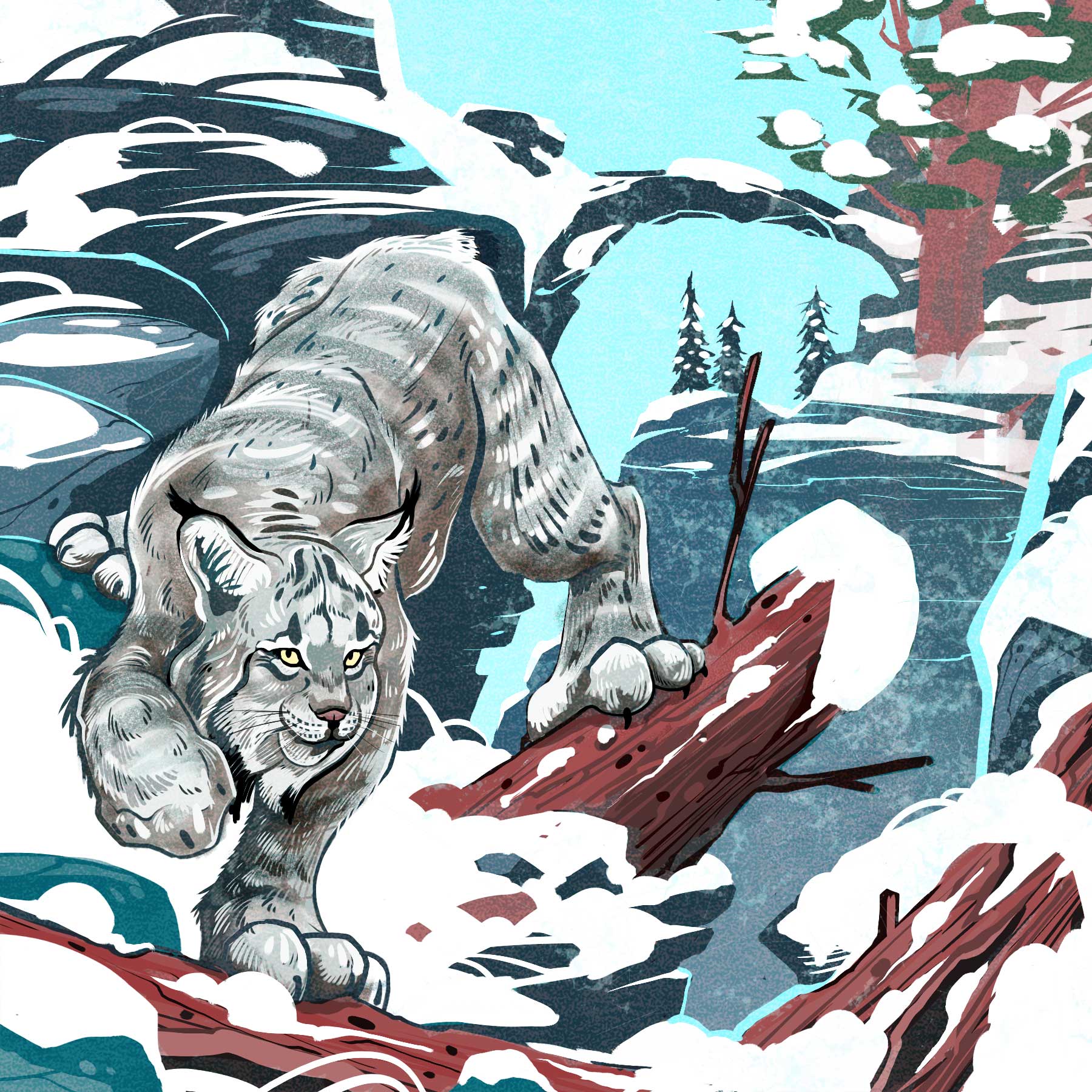Many wild animals live in Canada, but one truly Canadian animal is the lynx. Other than Alaska and a few small populations in the northern US, Canada lynx (Lynx canadensis) are found in Canada. In BC, lynx are a species of the interior, found primarily east of the Coast Mountains. The preferred habitats of these animals are in the boreal forests, so in the dry southern interior they seek higher elevations to find the preferred mix of moist deciduous and dense coniferous forests.
Advertisement

Lynx are medium-sized wild cats, with adult males weighing 10 to 12 kilograms and females eight to 10 kilograms. The sexes look alike, they are basically tawny or cream coloured and may be mottled with brown or black spots. The body is supported on long, sturdy legs, with extra large furry paws. Their short tail has a black tip and the ears have thin black tufts of fur at the tips. On both sides of their face, a spray of long hair sweeps out and down, kind of like long sideburns, cream coloured and streaked with black.
Modern lynx likely evolved from the Issoire lynx that lived in Europe and Africa two to four million years ago. Currently, there are two lynx species in the old world (Eurasian lynx and Iberian lynx) and two in North America (Canada lynx and bobcat). The Canada lynx claimed the northern forests and the bobcat (Lynx rufus) colonized the rest of the continent. The ranges of the two species overlap in southern BC. Bobcats are usually slightly smaller, with more prominent black and brown spotting and smaller ear tufts, but telling the two species apart can be difficult. Lynx are much more numerous in BC than are bobcats; however, being secretive and mostly nocturnal, neither is seen very often.
Advertisement
Adult lynx, except females with kittens, live a solitary life, coming together only to mate. Mating season is late winter, and the kittens are born in May. A litter size varies between one and five. Litters are typically larger in the north than the south, and larger in both areas when food is plentiful. The female does all of the parenting. Kittens are born blind and helpless, but they grow quickly and are ready to leave the natal den at about six weeks. The kittens remain with their mother for at least a year before striking out on their own. Lynx can live 14 years, but mortality factors such as starvation, trapping by humans and predation by wolves and cougars mean that few lynx make it to their 10th birthday and many never get to be two years old.
The list of potential lynx prey animals includes small mammals such as mice and squirrels, birds such as grouse and ptarmigan and, occasionally, young deer and mountain sheep. However, the most dramatic feature of Canada lynx lifestyle is the dependence on snowshoe hares as the primary, sometimes almost exclusive, prey. In good times, a lynx may catch four or five hares a week. However, hares regularly go through wide swings in abundance, peak populations occurring at approximately 10-year intervals. Canada lynx are so dependent on this one prey species that their populations follow a similar cycle after a lag of a year or two. When hare numbers are high, lynx are in good physical condition, litter sizes increase, kitten survival is high and young females may breed successfully in their first year. When hare numbers crash, lynx experience decreased physical condition, increased time spent hunting, decreased litter sizes, poor kitten survival and eventually cannibalism and starvation. The surviving lynx numbers gradually increase as the hare populations recover, and the cycle repeats. This lockstep pattern of population densities is most dramatic in the boreal forests. In southern BC, a lower density of hares, the availability of alternate prey and competition from other predators like bobcats and coyotes all work to limit lynx numbers and to suppress the volatility of their population fluctuations.
Advertisement
In BC, lynx are considered both a furbearing animal and a game animal. Although the harvest of lynx is primarily by trappers, in most regions of BC there is also a hunting season. Lynx are not commonly found in Vancouver Island or Lower Mainland regions. The hunting and trapping seasons are mostly in winter and coincide with the time when the fur is prime. In the southern interior regions, a small but enthusiastic number of hunters use hounds to pursue Canada lynx, as well as cougars and bobcats.